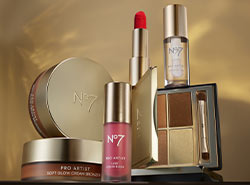We’re here to answer your questions on minoxidil, from what it is, to how it works & who can use it…
This article uses the terms ‘male/man/men’ and ‘female/woman/women’. Please note, this is in reference to the sex assigned at birth.
Male and female pattern baldness are the most common types of hair loss, and frequently start in the late 20s or early 30s for men, and slightly later for women. If you or someone you know are experiencing hair loss, you may have heard of a medicine called minoxidil. Read on to find out more about its uses as a hair loss treatment and how it works.
What is minoxidil?
Minoxidil is a medicine used to treat male pattern baldness or female pattern baldness, also known as hereditary hair loss (androgenetic alopecia).
It’s a topical treatment, available over the counter, that comes in a range of formats including liquid, foam or spray and is applied directly to the scalp to encourage hair to grow.
How does minoxidil work?
Originally, minoxidil was used in tablet form as a treatment for high blood pressure. However, it was discovered that it also increased hair growth and was developed into a topical solution for the scalp.
It’s not fully understood how minoxidil works for hair loss, but it’s thought to increase blood supply to the hair follicle. It helps to prevent further hair loss and encourage hair regrowth, when applied directly to the scalp where the hair loss has occurred.
Is minoxidil suitable for me?
Minoxidil is designed to treat hereditary hair loss that runs in your family. It's not intended to treat hair loss due to other causes, such as stress, illness, iron deficiency or treatments for cancer.
It's recommended that you see your GP or pharmacist before starting treatment with minoxidil, to make sure your hair loss is due to male or female pattern baldness rather than any other cause.
As with most medicines, minoxidil isn't suitable for everybody. You shouldn't use it if:
- You're allergic to any of the ingredients
- You have a scalp condition such as psoriasis
- You've recently shaved your scalp
- You have high blood pressure (even if it's controlled with medicine)
- You have sunburn to your scalp
- You're using plasters or other dressings on your scalp
- You're pregnant or breastfeeding
- You're under 18 or over 65 years old
You should check with your GP or pharmacist before using minoxidil if you're taking medicines that contain any of the following ingredients:
- Tretinoin
- Corticosteroids
- Dithranol
- Petrolatum
- Guanethidine
You can also check with your pharmacist if you're not sure what's in any medicines you're taking or whether they may interact with minoxidil – they'll be happy to advise.
Can women use minoxidil?
Although baldness occurs more frequently in men – around half of all men will experience some hair loss by the age of 50 – it can also occur in women.
Minoxidil can be used as a treatment for both male and female pattern baldness. However, there are different minoxidil products for men and women, so it’s important to choose one labelled ‘for women’ or ask your pharmacist if you’re not sure.
Where can I get minoxidil?
Minoxidil treatment is available without a prescription, and you can buy it over the counter from your pharmacy (including Boots pharmacies), if suitable for you.
How do I use minoxidil?
Minoxidil is applied directly to the scalp, in the areas where you've experienced hair loss. It's available as a foam, spray or a liquid. Different brands and strengths have different usage instructions, so always read the patient information leaflet carefully.
It's available in two strengths – regular strength (2%) and extra strength (5%) – and, as mentioned earlier, different products are recommended for men and women. You can ask your pharmacist for advice on which one is most appropriate for you.
Are there any side effects to minoxidil?
As with any medicine, there are some potential side effects of minoxidil to be aware of. Some of the common ones include:
- Increased hair loss at the beginning of treatment
- An irritated scalp
- Headaches
You should read the patient information leaflet of whichever minoxidil product you’re using for a full a list of possible side effects.
Can you use minoxidil for your beard?
Minoxidil is a treatment for the scalp and there is little evidence to suggest it works for beard hair regrowth. Since it can also cause side effects that include skin irritation, it’s not recommended for use on the beard area.
How long does minoxidil take to work?
It takes around four months of daily treatment to see hair regrowth. If no regrowth occurs after 12 months' use, you should stop using it.
What happens if you stop using minoxidil?
If you stop using minoxidil, any areas of hair regrowth will disappear in around three to four months, so you need to keep using it regularly for best results.
Don’t forget, if you’re considering minoxidil for hair loss,it's recommended you see your GP or pharmacist beforehand to check it’s suitable for you and to ensure your hair loss is due to male or female pattern baldness rather than any other cause.








